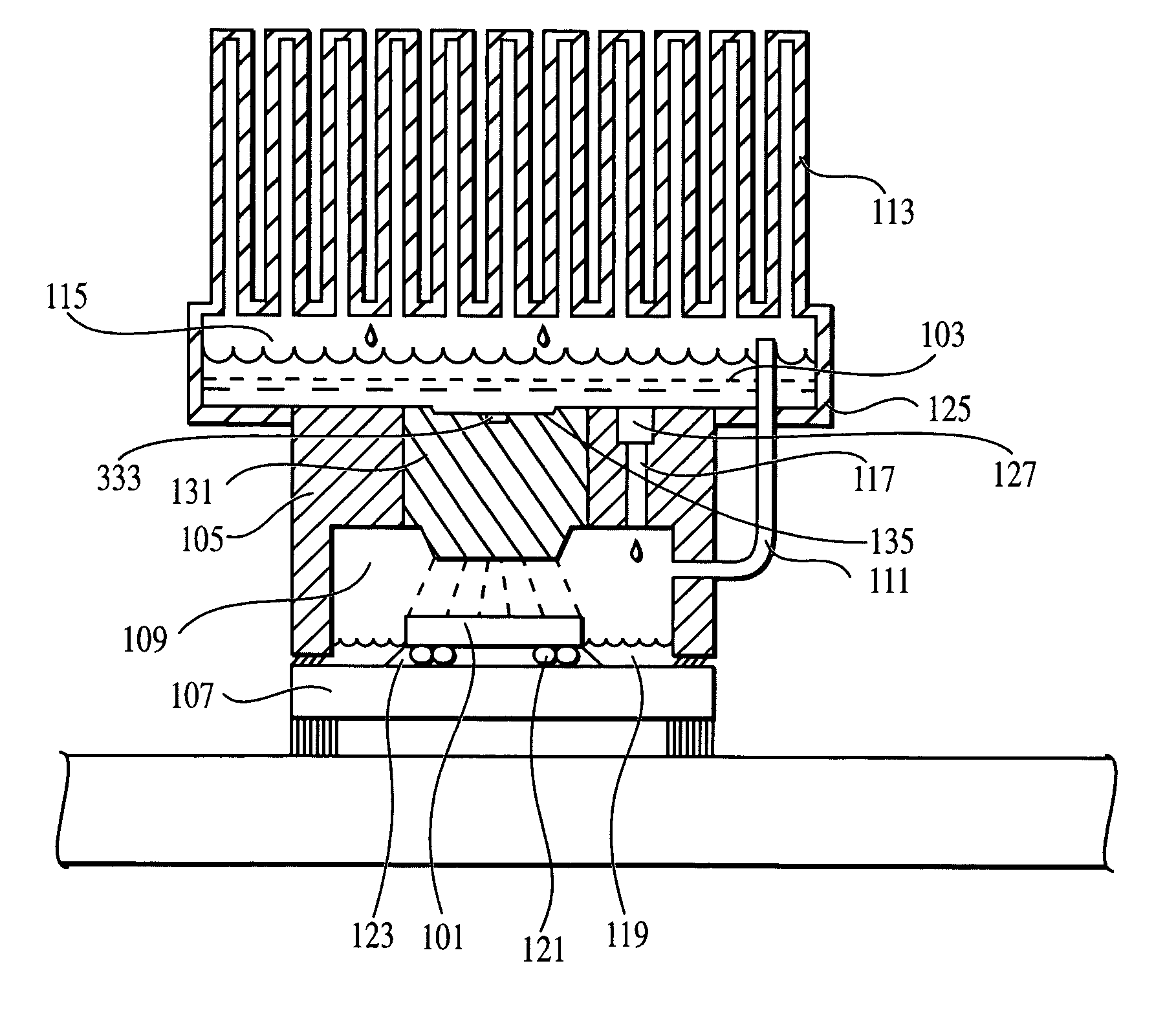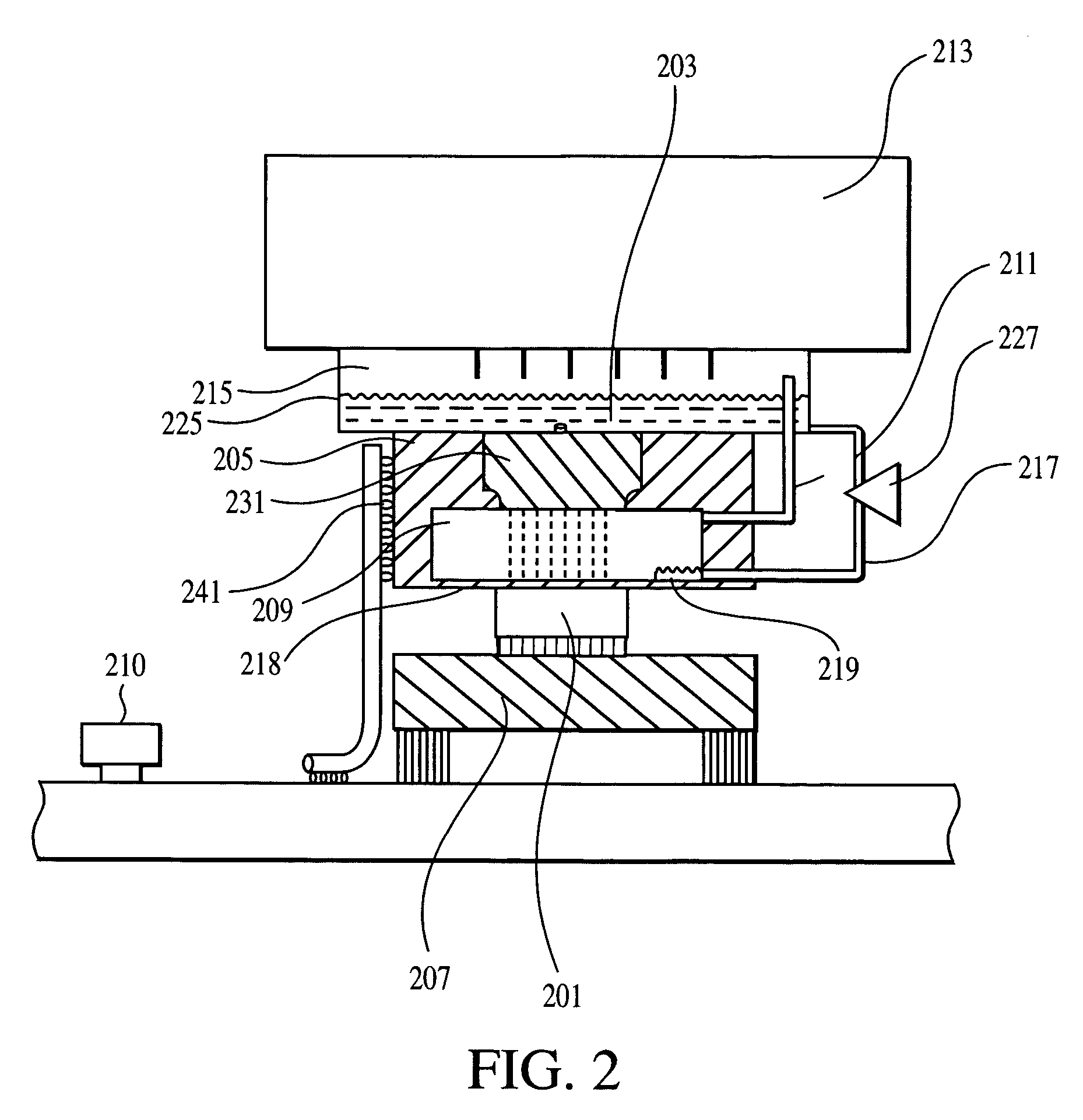Multi-state spray cooling system
a spray cooling and multi-state technology, applied in the direction of domestic cooling apparatus, lighting and heating apparatus, and semiconductor/solid-state device details, etc., can solve the problems of increasing power dissipation requirements, increasing the total power dissipation level needed by computer systems, and increasing the heat generated by devices, so as to achieve efficient operation
- Summary
- Abstract
- Description
- Claims
- Application Information
AI Technical Summary
Benefits of technology
Problems solved by technology
Method used
Image
Examples
Embodiment Construction
[0023]The invention summarized above and defined by the enumerated claims may be better understood by referring to the following detailed description, which should be read in conjunction with the accompanying drawings. This detailed description of particular preferred embodiments of the invention, set out below to enable one to build and use particular implementations of the invention, is not intended to limit the enumerated claims, but rather it is intended to provide particular examples thereof.
[0024]Evaporative spray cooling promises to be a technology that can deliver high performance cooling. An objective of spray cooling is for a device's wall-temperature to achieve a value close to a coolant's saturation temperature.
[0025]With reference to FIG. 1, a first embodiment of a cooling system is for cooling a component 101, such as a heat-generating semiconductor device, other information processing device, optical component, or the like.
[0026]The cooling system cools the component ...
PUM
 Login to View More
Login to View More Abstract
Description
Claims
Application Information
 Login to View More
Login to View More - R&D
- Intellectual Property
- Life Sciences
- Materials
- Tech Scout
- Unparalleled Data Quality
- Higher Quality Content
- 60% Fewer Hallucinations
Browse by: Latest US Patents, China's latest patents, Technical Efficacy Thesaurus, Application Domain, Technology Topic, Popular Technical Reports.
© 2025 PatSnap. All rights reserved.Legal|Privacy policy|Modern Slavery Act Transparency Statement|Sitemap|About US| Contact US: help@patsnap.com



